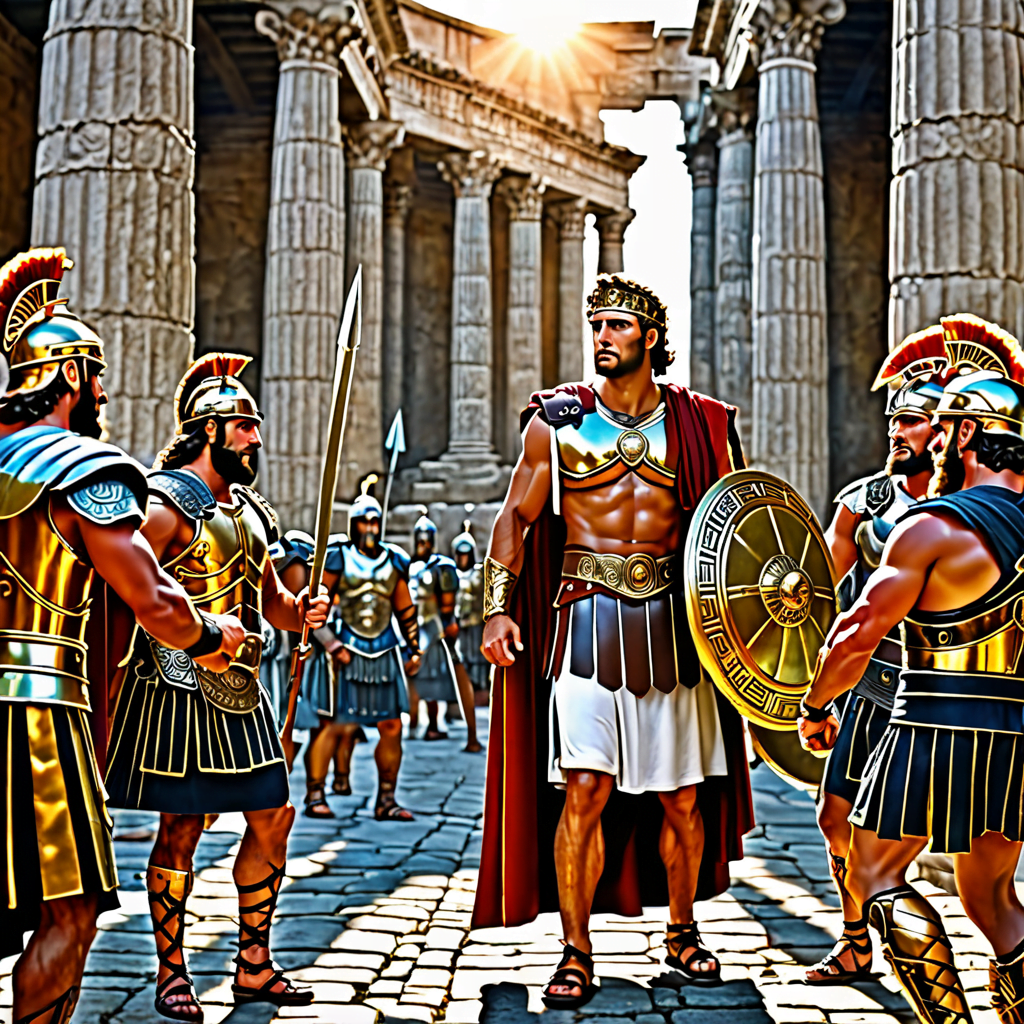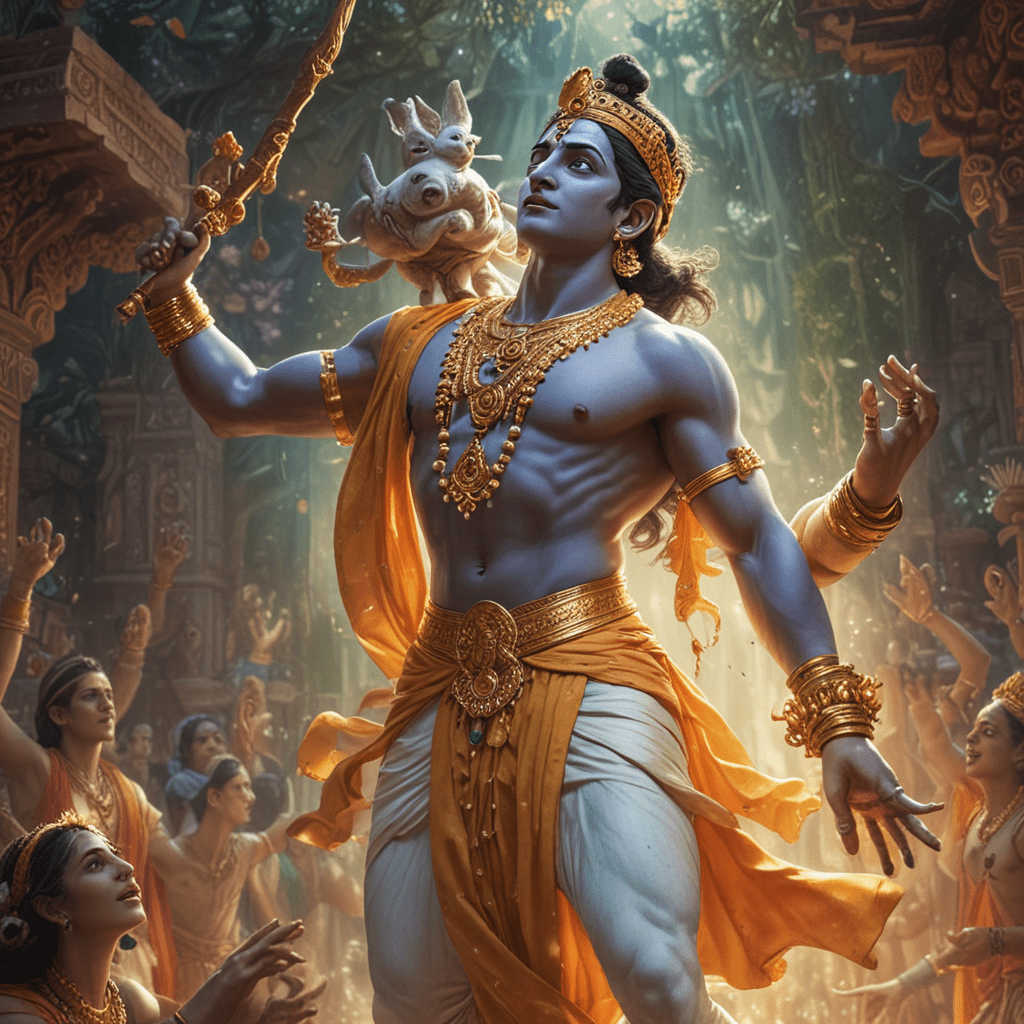Thai Mythology: A Foundation for Dance and Theater
Thai dance and theater are deeply rooted in the rich tapestry of Thai mythology. Stories of gods, spirits, heroes, and monsters have been passed down through generations, shaping the cultural identity of Thailand. These myths serve as the foundation for countless dance and theater performances, providing a vibrant and intricate world of characters, plots, and themes.
The stories of Thai mythology are not just entertaining; they convey powerful moral lessons and spiritual beliefs. They reflect the belief in karma, reincarnation, and the importance of maintaining balance between the human and supernatural worlds. The mythical figures, with their unique characteristics and powers, symbolize human virtues and vices, offering valuable insights into the human condition.
These stories are not mere tales but serve as a guiding force, influencing the values, rituals, and artistic expressions of the Thai people. This interweaving of mythology and performance art has ensured the preservation and transmission of Thai cultural heritage for centuries.
Key Figures and Stories: A Tapestry of Belief
Thai mythology is filled with fascinating characters and tales that mirror the beliefs and aspirations of the Thai people. Central to these stories are the gods, who represent benevolent forces and embody divine qualities.
One of the most prominent figures is Phra Phrom, the creator god, depicted with four faces and four hands, symbolizing his omnipresence and ability to oversee the universe. Phra Indra, the king of the gods, is associated with thunder and lightning, representing power and justice. Phra Brahma, the god of creation, is known for his wisdom and creativity.
These deities are often depicted in Thai dance and theater, their presence providing a sense of spiritual significance and moral guidance.
Beyond the gods, there are also figures from Thai folklore, such as Naga, serpentine beings who are believed to guard the waters and represent both danger and protection. Yak, fierce, often grotesque demons, symbolize the forces of chaos, while Kinnara, half-human, half-bird beings, represent harmony and music.
These diverse characters populate the stories of Thai mythology, forming a complex narrative that reflects the beliefs, aspirations, and challenges of the Thai people.
Ramakien: The Epic Tale of Love, Duty, and Divine Intervention
The Ramakien, the Thai version of the Indian epic Ramayana, stands as a cornerstone of Thai literature and performance art. This epic tale, filled with drama, adventure, and divine intervention, tells the story of Prince Rama, his virtuous wife Sita, and his devoted brother Lakshmana.
The story revolves around the abduction of Sita by the demon king Ravana, Rama's journey to rescue his beloved, and the epic battles that ensue. The Ramakien encompasses themes of love, duty, virtue, and the triumph of good over evil.
The Ramakien is a central element of Thai dance and theater. It is frequently adapted for performances, with elaborate costumes, intricate choreography, and vibrant music, bringing the story to life on stage.
The epic's popularity reflects its enduring relevance to Thai culture. Its themes of courage, loyalty, and righteous conduct resonate with audiences, reinforcing the values that are central to Thai society.
Jataka Tales: The Reincarnations of Buddha and Moral Lessons
The Jataka Tales, stories about the previous lives of the Buddha, are another important source of inspiration for Thai dance and theater. These tales, filled with humor, wisdom, and moral lessons, depict the Buddha as a bodhisattva, a being who has chosen to delay his own enlightenment to help others.
Each Jataka Tale illustrates a particular virtue or moral lesson. For example, "The Story of the Monkey and the Crocodile" teaches the importance of compassion and selflessness, while "The Story of the Blind Turtle" highlights the power of perseverance and faith.
The Jataka Tales are often adapted for Thai dance, with the choreography and music reflecting the story's themes and emotions. These performances provide a delightful and engaging way to learn about Buddhist teachings and their relevance to daily life.
Naga Lore: Serpents, Guardians, and the Waters of Life
Naga, serpentine beings with human heads, play a significant role in Thai mythology. These creatures are often depicted as guardians of the waters, representing both danger and protection.
Naga are believed to possess supernatural powers and are often associated with rain, fertility, and the cycles of life. They are also believed to be protectors of temples, particularly those located near bodies of water.
In Thai dance and theater, Naga are often portrayed in elaborate costumes, their bodies adorned with scales and jewels, symbolizing their mystical nature. They may be depicted as benevolent figures, protecting the righteous, or as dangerous creatures that must be appeased.
The tales of Naga reflect the importance of water in Thai life and the reverence for the natural world. They also remind people of the powerful forces that lie beyond the visible world and the need to respect and honor them.
The Importance of Gods and Spirits: Divine Intervention and Rituals
Thai mythology emphasizes the interconnectedness of the human and supernatural realms, with gods and spirits playing a significant role in everyday life. These divine beings are believed to intervene in human affairs, offering blessings, protection, or retribution based on actions and behavior.
The belief in divine intervention is deeply ingrained in Thai culture, influencing various aspects of life, from personal decisions to large-scale events. Rituals and ceremonies are often performed to appease spirits, seek blessings from deities, and ensure harmony within the community.
These rituals often involve offerings, prayers, and elaborate dances. Offerings, such as flowers, incense, and food, are symbolic expressions of respect and gratitude towards the supernatural beings. Prayers are recited to request assistance, express gratitude, or seek forgiveness for past transgressions.
The performance of these rituals is a testament to the strong belief in the power of the divine and the importance of maintaining a harmonious relationship with the supernatural world. It is through these rituals that the stories and characters of Thai mythology come to life, offering guidance, comfort, and a sense of connection to something larger than themselves.
The Role of Dance as Storytelling: Choreography as a Narrative Language
Thai dance is not merely a form of entertainment but a powerful medium of storytelling, drawing on the rich tapestry of Thai mythology to convey complex narratives and emotions. Each movement, gesture, and facial expression carries symbolic meaning, weaving a tapestry of visual storytelling that speaks to the heart and soul.
The choreography of Thai dance is highly symbolic, with specific movements representing characters, emotions, and events from the stories. A raised hand might symbolize a deity's blessing, while a flowing arm gesture might represent a serpent's graceful movement.
The dancers themselves become embodiments of the mythical characters, using their bodies to express the characters' personalities, emotions, and struggles. Their expressions, postures, and movements become a language that transcends words, allowing audiences to connect with the stories on a deeper level.
Costume and Makeup: Embodying the Divine and the Supernatural
Costumes and makeup play a pivotal role in bringing Thai mythology to life on stage. They serve as visual representations of the characters' supernatural powers, divine status, and personalities, transporting audiences into a world of magic, wonder, and spiritual significance.
The costumes are often elaborate and richly adorned, reflecting the characters' status and power. Gods and goddesses might be clothed in opulent silks and jewels, while demons and spirits might be adorned with fearsome masks and intricate patterns. The colors and textures of these costumes also hold symbolic meaning, reflecting the characters' personalities and roles within the stories.
Makeup, too, is an essential element of Thai dance and theater, used to transform actors into mythical beings. Elaborate facial designs, often inspired by traditional patterns and symbols, highlight the characters' unique features and identities.
The use of costumes and makeup intensifies the visual storytelling, creating a spectacle that captures the imagination and deepens the audience's connection to the mythical world on stage.
Music and Rhythm: Setting the Mood and Enhancing the Mythological Narrative
Music is an integral part of Thai dance and theater, creating a powerful atmosphere that enhances the storytelling and transports audiences to a realm of myth and legend. The rhythmic patterns and melodies of Thai music evoke a range of emotions, from joy and celebration to sorrow and awe, perfectly complementing the dramatic moments of the performance.
The use of traditional instruments, such as the khin (a plucked zither), the ranad (a xylophone), and the pi (a flute), creates a distinctive sound that is both captivating and evocative. The rhythmic patterns of the music serve as a backdrop for the dancers, guiding their movements and enhancing the drama of the story.
The music also plays a crucial role in setting the mood of the performance. A lively tempo might accompany scenes of celebration and victory, while a slower, more solemn rhythm might accompany scenes of tragedy or reflection.
The Legacy of Thai Mythology in Contemporary Performance: Adapting Tradition to Modernity
Thai mythology continues to inspire contemporary artists, who are reinterpreting traditional stories and characters in new and innovative ways. Contemporary dance and theater productions often draw upon the rich heritage of Thai mythology, incorporating elements of traditional storytelling, music, and dance into their works.
These contemporary productions explore themes and ideas relevant to modern audiences, while still honoring the traditions and cultural significance of Thai mythology. They often feature innovative choreography, multimedia elements, and contemporary music, creating a dynamic and engaging experience that bridges the gap between tradition and modernity.
The legacy of Thai mythology is not merely confined to historical texts and performances but continues to evolve and inspire new forms of artistic expression. This dynamic interplay between tradition and innovation ensures that the stories and characters of Thai mythology remain relevant and engaging for generations to come.
FAQ (Frequently Asked Questions)
Q: What are some of the most popular stories in Thai mythology?
A: Some of the most popular stories in Thai mythology include the Ramakien, the Jataka Tales, and the legend of the Naga. These stories are frequently adapted for dance and theater performances, showcasing the rich heritage and cultural significance of Thai mythology.
Q: How does Thai dance and theater reflect the beliefs of the Thai people?
A: Thai dance and theater are deeply rooted in the beliefs and values of Thai culture. The performances often depict stories of gods, spirits, and heroes, reflecting the importance of karma, reincarnation, and the balance between the human and supernatural worlds.
Q: What is the significance of costumes and makeup in Thai dance and theater?
A: Costumes and makeup play a vital role in Thai dance and theater, visually representing the characters' identities, personalities, and supernatural powers. They serve to transport audiences into a world of myth and legend, enhancing the visual storytelling and bringing the stories to life.
Q: How does Thai music contribute to the storytelling in dance and theater?
A: Thai music plays a crucial role in setting the mood and enhancing the storytelling in dance and theater. The rhythmic patterns and melodies evoke a range of emotions, complementing the dramatic moments of the performance and immersing audiences in the world of the story.



